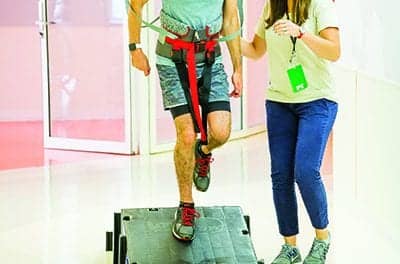A study comparing the effectiveness of virtual reality and treadmill training notes that the pairing may help prevent falls in older adults better than treadmill training alone.
The study, published recently in The Lancet, involved data from 282 participants (ages 60 to 90) from clinical sites in Belgium, Israel, Italy, the Netherlands, and the UK between the years 2013 and 2015. They all were able to walk at least 5 minutes unassisted, on stable medication, and had reported at least 2 falls in the 6 months before the start of the study. Nearly half of all participants (130) had Parkinson’s disease, and some (43) had mild cognitive impairment, according to a media release from The Lancet.
From this participant group, 146 were assigned to receive treadmill training with virtual reality, consisting of a camera that captured the movement of participants’ feet and projected it onto a screen in front of the treadmill, so that participants could ‘see’ their feet walking on the screen in real time.
The remainder of the participants, 136, received treadmill training alone.
Participants in each group took part in 16 training sessions, each lasting about 45 minutes, over a 6-week period. The researchers noted the participants’ fall rates in the 6 months following the end of the training sessions.
Prior to the training sessions the participants in the treadmill-only group fell, on average, 10.7 times per 6-month period, and the participants on the treadmill plus virtual reality group fell, on average, 11.9 times per 6-month period.
During the 6 months after the training sessions, participants in both groups experienced a decreased incidence rate of falls. However, this decrease was statistically significant among the participants who used treadmill and virtual reality training—from 11.9 to 6 falls, a 42% reduction. In comparison, the treadmill-only group’s fall rate decreased from 10.7 to 8.3 falls in the 6 months following the training, per the release.
The biggest improvement was seen in patients with Parkinson’s disease, the authors note. They suggest in the release that this could be due to a number of factors, including that they had higher rates of falls at the start of the study, or that virtual reality was able to help improve cognitive and motor skills, which are affected in Parkinson’s disease.
However, the researchers warn that, although the Parkinson’s disease improvement is interesting, the study was not designed to measure differences in-between sub-groups of patients, so further research is needed to verify their suggestions regarding the results.
[Source(s): The Lancet, Science Daily]





